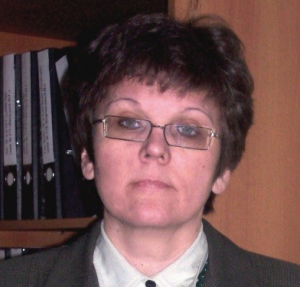Siliciclastic Sequence Stratigraphy
Acquisition of theoretical knowledge in the field of siliciclastic sequence stratigraphy as well as acquiring the skill of interpreting geological and geophysical materials on clastic complexes including the detection of sequence-stratigraphic elements.
Course description
After training the student will:
- know regional architecture of depositional systems, systems tracts, and stratigraphic surfaces
- be able to carry out sequence-stratigraphic reconstructions in clastic complexes and construct relative sea-level curve;
- acquire the skill of providing sequence-stratigraphic analysis and apply the results in professional activities.
Category of trainees:
Mid-level and top-level specialists and leaders of the oil-and-gas companies
Lecturer:

Prof. Dr. Svenlana Zorina – Department of Paleontology and Stratigraphy, Institute of Geology and Petroleum Technologies, Kazan (Volga Region) Federal University, Russia
No reviews yet.
| No. | Topic | Academic hours |
| 1. | Siliciclastic sequence stratigraphy. KEY CONCEPTS AND DEFINITIONS
Advantages of sequence stratigraphic analysis. Regional architecture of depositional systems, systems tracts, and stratigraphic surfaces. Key concepts of sequence stratigraphy. Definitions of sequence stratigraphy. Controls on accommodation and shoreline shifts in a marine environment. The concept of base level. Concepts of water depth, sea level, relative sea level, and base level. Regional architecture of depositional systems, systems tracts, and stratigraphic surfaces. Types of stratal terminations. Genetic types of deposits: normal regressive, forced regressive, transgressive |
4 hours |
| 2. | Parasequences
Development of parasequences and parasequence stacking pattern (the rate of increase of accommodation space < the rate of sediment supply) Development of parasequences and parasequence stacking pattern (the rate of increase of accommodation space > the rate of sediment supply) Parasequence sets, progradation, aggradation and retrogradation. |
6 hours |
| 3. | Sequence stratigraphic analysis OF PLATFORMAL SUCCESSIONS (A case study)
Mechanisms responsible for the platformal silisiclastic deposition. Middle Jurassic – Lower Cretaceous megasequences of the eastern Russian Platform and their chronostratigraphy. Methods of estimating paleodepth, sedimentation rates, volume of sediment deposited, areal extent, δA/δS ratio. Specific features of the accommodation-sedimentation regime in the mid Jurassic-early Cretaceous. Sequence stratigraphic modeling of mineral deposits distribution |
4 hours |
| Final test | 2 hours | |
| TOTAL: | 16 hours |
Form of study: full-time training with a break from work (2 days); remote studies; extramural studies with the use of distance educational programs
Full time training is conducted at the Institute of Geology and Petroleum Technologies at the following address: Kremlyovskaya str., 4/5, Kazan, Russia
We can provide accommodation assistance for non-resident students in order to book KFU campus / hotel rooms.
In addition to the program, there are coffee breaks and excursions in the Museum of History of Kazan University, the Geological Museum named after A.A. Stukenberg and the Kazan Kremlin.
